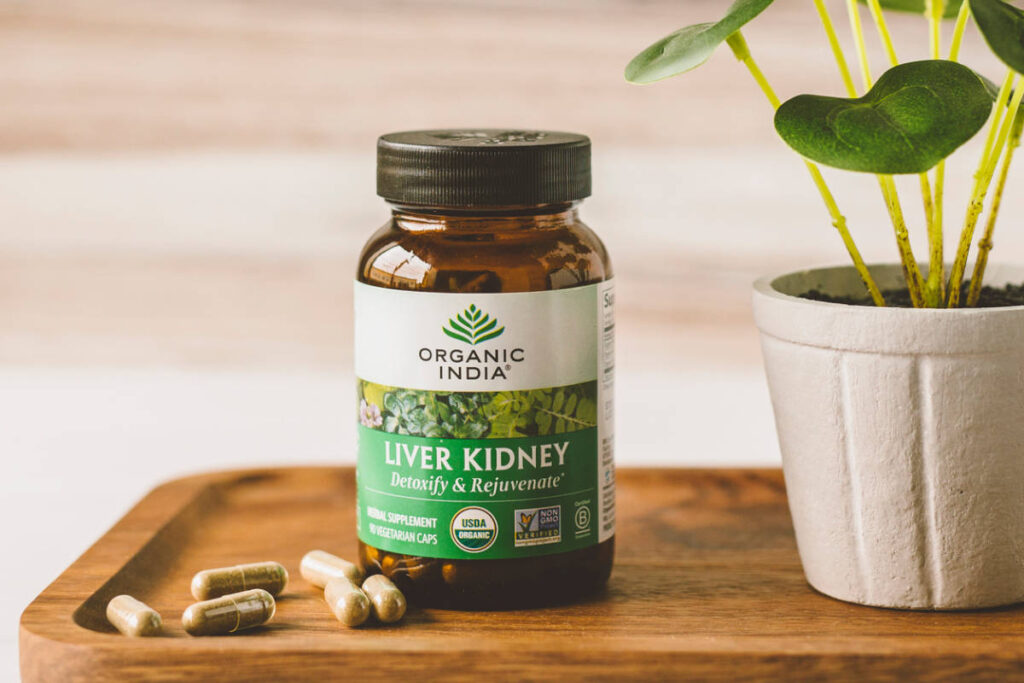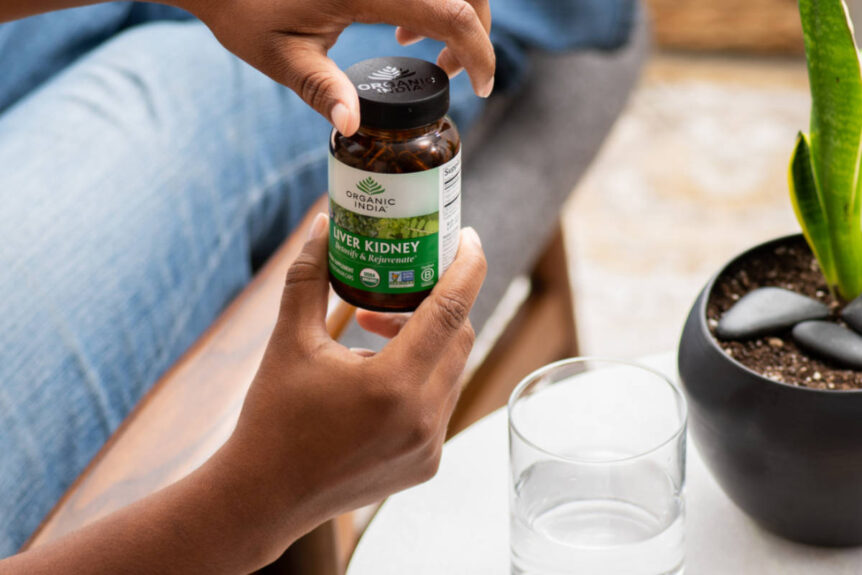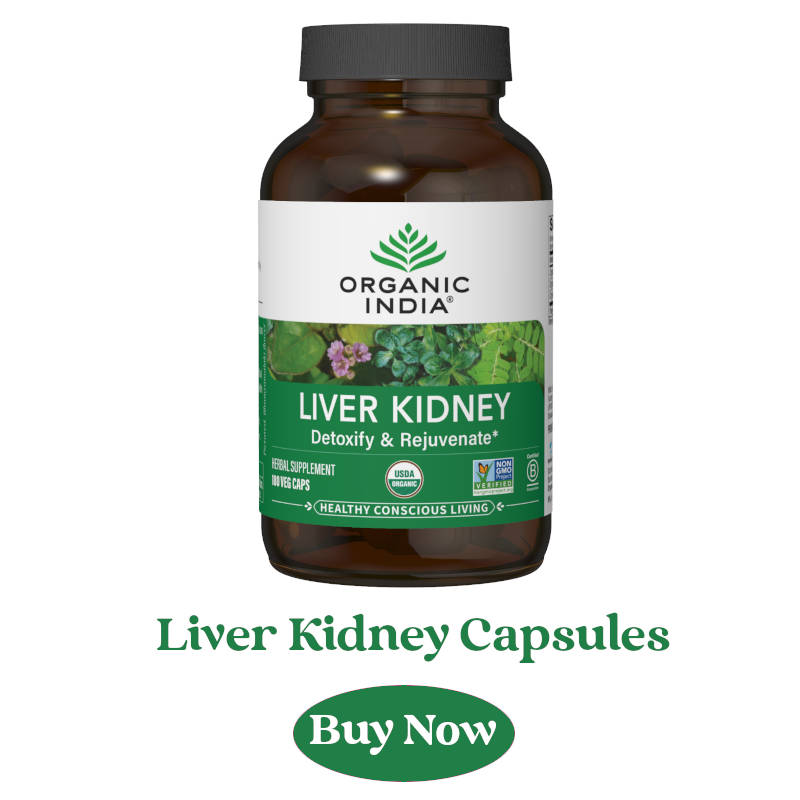

Section

Back
Ayurveda teaches how the mind, body, spirit, and even the universe are connected — working together to bring health and vitality to all creation. It makes sense, then, that the liver and kidneys also work together, and are quite literally connected both physically and functionally. It’s hard to look at liver health without looking at kidney health, so check out the functions of the liver and kidney, how they are connected, and some easy ayurvedic tips for keeping them functioning at their best.
Where are the kidneys and liver located?
First, for a quick lesson in anatomy, we will look at where the liver and kidney are physically located in the human body. The liver is located just above the stomach and below the diaphragm in the upper right abdomen. The kidneys are located beneath the rib cage to both the right and left of the spine. As you probably know, you have one liver and two kidneys — the liver is actually the largest gland in the body and about the size of an American football; and the kidneys are bean shaped and each around the size of a fist.
What do they do?
The liver and kidney are both essential organs for the body’s metabolism, homeostasis and detoxification.
- The liver performs more than 500 vital functions, but most notably converts nutrients into energy; filters the blood of toxins before it continues to the rest of the body; produces bile to aid in digestion; removes excess sugar from the bloodstream; stores carbohydrates; and much more.
- The kidneys filter the blood for water-soluble waste and toxins to be excreted; control mineral content in the bloodstream; regulate blood pH and more. In fact, they filter about 200 liters of fluid every single day.

How are the liver and kidney connected?
Viscerally speaking, the upper pole of the right kidney is located just behind the liver.
Functionally, the liver and kidney are most notably connected via a series of reactions called the urea cycle, also known as the ornithine cycle, where:
- The liver converts nitrogenous waste into a less toxic substance called urea
- Urea is released from liver cells into the bloodstream and transported to the kidneys
- The kidneys filter urea and other toxic waste from the blood to be excreted from the body as urine
Do they work together?
Yes, the liver and kidney work together in many ways, including waste removal, sodium regulation, calcium absorption and more. For detoxification and waste removal, the liver breaks down toxins into two substances: bile and urea. While bile is sent through the digestive tract, urea is transported through the bloodstream directly to the kidneys where it is then excreted from the body as urine; along with other toxic waste.
The liver and kidney also work together with the adrenal glands in water and sodium regulation. High levels of salt in the blood can greatly hinder circulation. So, as the chain of commands go, when there is a reduction in blood flow the kidneys send an enzyme called renin to the liver, which assists the liver in producing a substance that is sent to the adrenal glands. The adrenal glands are then cued to produce a hormone called aldosterone, which commands the kidneys to store salt and water.
In terms of calcium absorption, it all starts with the sun. When the sun hits your skin, it’s actually the liver that turns it into vitamin D. The vitamin D then travels through the bloodstream to the kidneys, where the kidneys turn it into calcitriol, a hormone that aids the intestines in absorbing calcium from food.
Why is kidney and liver health important?
Liver and kidney health is so important for skin, eyes, circulation, energy levels, detoxification, vitamin storage and absorption, and so much more. That’s why it is crucial to take kidney and liver health seriously if you are looking to lead an all-around healthy lifestyle. Minimizing alcohol and sugar, committing to a healthy diet and exercise, taking tried and true herbal supplements, and ample water intake are all key ways to support your kidney, liver and body as a whole from the inside out.
Not taking care of your kidney health and liver health can result in some uncomfortable symptoms. For example, when the kidneys are in poor health, signs like fatigue, difficulty concentrating, swelling in the ankles, puffiness around the eyes, low appetite, muscle cramps and more may occur. When the liver is not functioning at its best, yellowish skin and eyes, swelling in the legs, itchy skin, abdominal pain, vomiting and more may occur, depending on the severity.
Quick tips:
- Drink lots of water. Nothing cleanses the body like water. Water helps all organs in the body do their job, in particular the liver and kidneys. Water helps the liver move out toxins and kidneys secrete them as urine.
- Limit alcohol and sugar intake. Sugar and alcohol both put strain on the liver, and can cause damage, inflammation and fatty buildup, which can actually potentially lead to liver disease. Liver disease is commonly associated with kidney issues.
- Try an herbal supplement. Medicinal herbs have long been used for aiding the kidney and liver. For example, the ayurvedic herbs Bhumyamyalaki and Katuki support healthy liver function, while Punarnava can help support healthy kidney function. Together in a supplement, like Liver Kidney, they can provide powerful detox support.
- Eat a balanced diet. Eat a balanced, whole foods diet with fruits, vegetables, lean proteins, whole grains and healthy oils. Also, eat some foods specifically known for being good for the liver and kidney, like cranberries, blueberries, cruciferous veggies, green leafy vegetables and garlic.
Liver and kidney health are inextricably connected. By taking care of both, you allow them to do their job more efficiently and effectively. Detoxify the body, improve circulation, and enhance nutrient absorption by drinking plenty of water, trying herbal supplements, and following a healthy lifestyle with physical activity and whole foods. Your kidney and liver will thank you!







